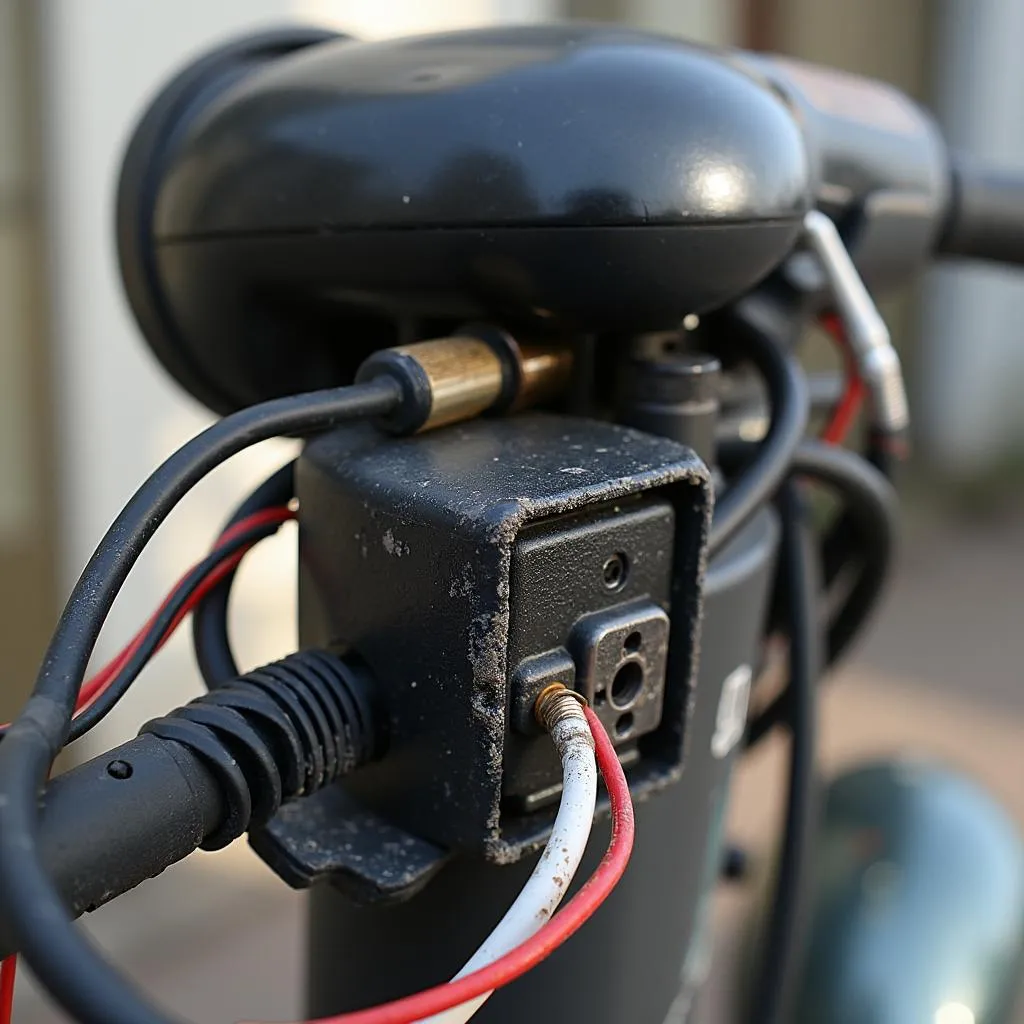Seeing a warning light illuminate on your BMW dashboard can be unsettling. When it’s related to your brakes, understanding the issue becomes even more critical. This comprehensive guide delves into the various BMW warning lights associated with brakes, helping you decipher their meanings and take appropriate action.
Decoding BMW Brake Warning Lights
BMWs utilize a sophisticated system of sensors and warning lights to keep you informed about your vehicle’s health, especially regarding critical safety components like the brakes. Let’s break down the common brake-related warning lights:
1. Brake Pad Wear Indicator
Appearance: Yellow circle with dotted lines forming a circle within it.
This light signals that your brake pads have worn down and need replacement. Ignoring this warning can lead to costly damage to your rotors and significantly reduced braking efficiency.
2. Brake System Warning Light
Appearance: Red circle with an exclamation mark (!) inside, often accompanied by the word “BRAKE.”
This is a serious warning indicating a potential failure within the brake system. It could be due to low brake fluid, a malfunctioning ABS system, or other brake-related issues. It’s crucial to stop driving immediately and have your BMW towed to a qualified mechanic for diagnosis and repair.
3. Anti-lock Braking System (ABS) Warning Light
Appearance: Yellow circle with “ABS” inscribed inside.
This light indicates a problem with your BMW’s Anti-lock Braking System. While your regular brakes may still function, the ABS might not engage during emergency braking situations, potentially leading to wheel lockup and loss of control.
4. Parking Brake Warning Light
Appearance: Red circle with a “P” inside or an exclamation mark (!) within parentheses.
This light typically illuminates when the parking brake is engaged. If it stays on even after releasing the parking brake, it could indicate a faulty switch, a problem with the brake cable, or an issue with the electronic parking brake system.
Common Causes of BMW Brake Warning Lights
Several factors can trigger BMW brake warning lights, including:
- Worn Brake Pads: This is the most frequent culprit, especially if you notice the Brake Pad Wear Indicator light.
- Low Brake Fluid: A leak in the brake lines, a failing master cylinder, or worn brake components can lead to low brake fluid levels.
- Faulty ABS Sensors: These sensors monitor wheel speed and are crucial for ABS functionality. A malfunctioning sensor can trigger the ABS warning light.
- Electrical Issues: Wiring problems, a faulty brake light switch, or a blown fuse can also activate various brake warning lights.
What to Do When a BMW Brake Warning Light Turns On
“Ignoring a brake warning light, especially the red BRAKE warning, is incredibly risky,” says Jake Carter, a seasoned BMW mechanic with over 15 years of experience. “It’s always best to err on the side of caution and have your vehicle checked by a professional immediately.”
Here are some general guidelines:
- Safety First: If you see the red “BRAKE” warning light or experience any unusual braking behavior, stop driving immediately. Find a safe location to pull over and call for a tow truck.
- Check Brake Fluid: When safe, carefully inspect the brake fluid level in the reservoir. If it’s significantly low, refrain from driving and call for assistance.
- Consult Your Owner’s Manual: Your BMW’s owner’s manual provides specific information about the warning lights and recommended actions.
- Seek Professional Help: Diagnosing and repairing brake systems requires specialized knowledge and tools. Take your BMW to a qualified mechanic or dealership for proper inspection and repair.
Maintaining Your BMW Brakes
Preventing brake issues is always preferable to dealing with them after they arise. Regular brake maintenance can save you from costly repairs and ensure your safety on the road.
Here are some proactive measures:
- Regular Inspections: Have your brakes inspected by a qualified mechanic at least once a year or every 10,000-12,000 miles.
- Timely Brake Pad Replacement: Don’t wait for the brake pad wear indicator to light up. Adhering to the manufacturer’s recommended replacement schedule is crucial.
- Brake Fluid Flush: BMW recommends flushing the brake fluid every 2 years or as specified in your owner’s manual.
- Quality Parts: Always use high-quality brake pads, rotors, and fluids that meet BMW’s specifications.
Conclusion
Understanding your BMW’s brake warning lights is crucial for ensuring your safety and the longevity of your vehicle. By addressing these warnings promptly and practicing proactive brake maintenance, you can enjoy a smooth and worry-free driving experience. Remember, if you’re ever in doubt, seeking professional help is always the safest course of action.

